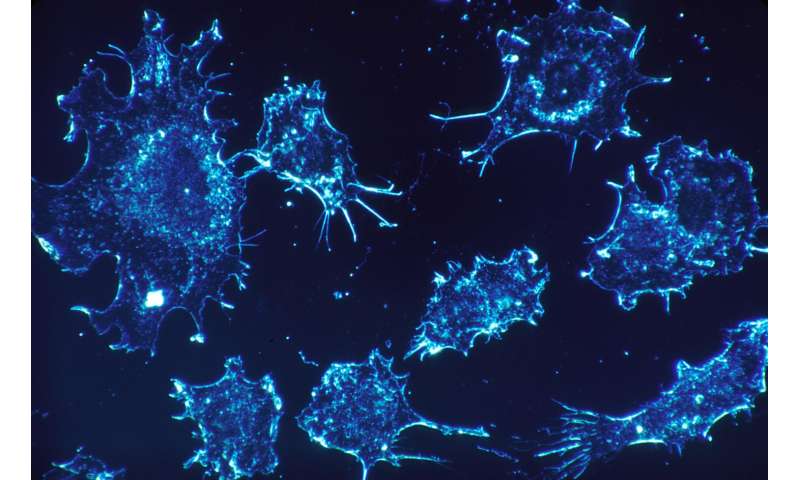
The cancer called biliary tract cancer (BTC) is not the most widespread form of cancer. In western countries, about 1.6 in 100.000 gets the diagnose every year. It is, however, a very aggressive form of cancer.
The majority of patients with BTC are diagnosed with advanced disease and has an average survival of only 1 year from initiation of chemotherapy. With such narrow survival windows, it is crucial to improve our understanding of the disease.
Now, researchers from Biotech Research & Innovation Centre at the University of Copenhagen and Herlev and Gentofte Hospital along with collaborators from Rigshospitalet and Sygehus Lillebaelt have identified a biomarker that can tell doctors how aggressive a patient’s disease may be.
“We have found a biomarker that reliably predicts how aggressive a patients disease will evolve, which in the future could help doctors in the hospitals make the right decisions about chemotherapy for the benefit of each BTC patient,” says Jesper Andersen, Associate Professor at BRIC.
Biomarkers can used for more than the diagnosis
The researchers measured the levels of two inflammatory proteins and a biomarker commonly used in pancreatic cancer before and during chemotherapy in patients with advanced BTC and found that patients with higher levels of these markers before chemotherapy had a lower survival rate. Especially one protein called IL6 (interleukin-6) proved to be superior to the other markers in predicting those patients at greatest risk of death.
“A common misperception may be that biomarkers are mainly needed to diagnose a specific cancer type, but diverse biomarkers are also needed to guide clinical decision-making throughout each patients’ individual journey. These types of prognostic and predictive biomarkers deserve increased attention, in particular as they are playing important roles in the increasingly individualized management of more common cancer types”, says Jesper Andersen.
There are several markers to predict patients at greatest risk of death, however it was confirmed that the prognostic information provided by measuring IL-6 is not captured by other inflammatory markers already in routine clinical use. For instance, about 10 percent of the population does not express the marker that is normally measured (CA19-9) to predict the patient clinical outcome. Therefore, the course of disease cannot be predicted for these patients using CA19-9, for which IL-6 may be used instead.
Inhibiting IL-6 may improve response to chemotherapy
By inhibiting signaling of the protein IL-6 in a mouse model of human BTC, researchers discovered that the response of mouse tumors to chemotherapy significantly increased.
“Our data suggests that inhibiting IL-6 signaling may extend therapeutic benefit compared to chemotherapy alone. However, this will require careful evaluation in randomized clinical trial settings. Such a trial is currently ongoing at Herlev and Gentofte Hospital and results from this and potential future trials will contribute to our knowledge in regards to the potential of targeting the IL-6 pathway in patients with BTC”, says Jesper Andersen
Large sample size made possible through collaboration
Researchers studying BTC face a data-challenge since only 1.6 per 100,000 of Western populations are diagnosed with BTC annually. This makes it difficult to collect comprehensive amounts of patient data. Therefore, one of the key strengths of this study lies in the patient numbers attained and analyzed in this rare cancer demographic, amounting to 1590 serum samples from 452 patients with advanced BTC.
Furthermore, the study explores advanced BTC patients who represent the majority of patients at diagnosis, while the majority of previous BTC studies published to date have focused on early stage disease.
“It is imperative to increase representation of these patients with the worst prognosis in subsequent studies. These studies should also include longitudinal sampling throughout the patient’s clinical history, as we have done here”, says Jesper Andersen, group leader at BRIC.
The sample size achieved in this study was only made possible through the comprehensive collaboration between Herlev and Gentofte Hospital, Rigshospitalet and Sygehus Lillebaelt in Denmark.
Source: Read Full Article


